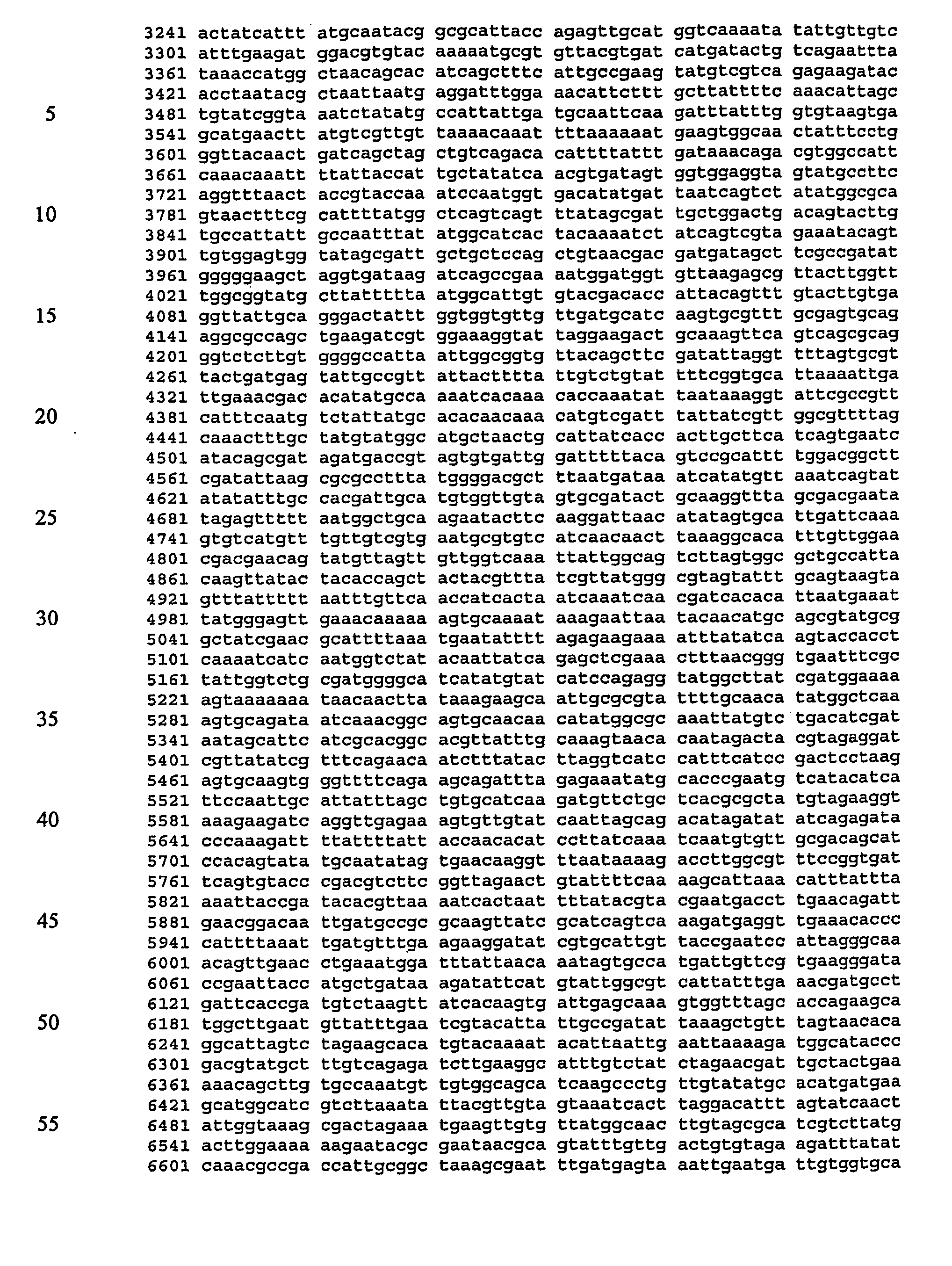Screening assays for inhibitors of a staphylococcus aureus siderophore
a staphylococcus aureus and inhibitor technology, applied in the direction of antibody medical ingredients, depsipeptides, dna/rna fragmentation, etc., can solve the problems of reducing the effectiveness of penicillin in treating i>s. aureus /i>infections, iron is frequently a growth-limiting nutrient,
- Summary
- Abstract
- Description
- Claims
- Application Information
AI Technical Summary
Benefits of technology
Problems solved by technology
Method used
Image
Examples
example 1
Materials and Methods
Bacterial Strains, Plasmids and Growth Media
[0216]Bacterial strains and plasmids used herein are described in Table 1. E. coli and S. aureus strains were routinely cultured in Luria-Bertani broth (Difco) and tryptic soy broth (Difco), respectively. Iron-restricted bacterial growth was performed in Tris-minimal succinate medium (TMS), the composition of which has been described (Sebulsky et al., (2000) J. Bacteriol. 182:4394-4400). Residual free iron was chelated from TMS medium by the addition of ethylenediamine-di(o-hydroxyphenylacetic acid) (EDDHA) (1 μM unless otherwise stated), or TMS was made iron-replete by the addition of 50 μM FeCl3. Antibiotics were used at the following concentrations: erythromycin (5 μg / ml), lincomycin (20 μg / ml), neomycin (50 μg / ml), kanamycin (50 μg / ml) and tetracycline (4 μg / ml) for S. aureus selection, and ampicillin (100 μg / ml), tetracycline (10 μg / ml) and erythromycin (300 μg / ml) for E. coli selection. All reagents were made wit...
example 2
S. aureus RN6390 and Newman produce siderophore
[0228]Herein we characterized the role that siderophore production plays in the iron-restricted growth of S. aureus in culture; we also examined its importance to in vivo growth and pathogenicity of this bacterium. To accomplish this, we generated genetically-defined siderophore-deficient mutants from siderophore-producing strains of S. aureus.
[0229]Previous studies have shown that various different isolates of S. aureus have the potential to produce multiple siderophores, including staphyloferrin A and staphyloferrin B (Meiwes et al., (1990) FEMS Microbiol. Lett. 67:201-206) and that the genetically-characterized strain 8325-4 produced siderophore(s), but of undetermined identity (Heinrichs et al. (1999) J. Bacteriol. 181:1436-1443; Horsburgh et al., (2001) J. Bacteriol. 183:468-475). We have demonstrated that two additional S. aureus strains that are used in our laboratory, strain RN6390 and strain Newman, produce readily detectable ...
example 3
Isolation of Siderophore from S. aureus
[0230]Further, we wanted to identify which siderophore(s) was produced by S. aureus RN6390 and related strains. Given that siderophore production was derepressed in fur backgrounds, we isolated siderophore from culture supernatants of strain 11295 (RN6390 fur::Km). Our initial experiments focused on the isolation of staphyloferrin A and staphyloferrin B using published procedures (Haag et al. (1994) FEMS Microbiol. Lett. 115:125-130; Meiwes et al. (1990) FEMS Microbiol. Lett. 67:201-206). However, these purifications yielded extremely little CAS-positive material, suggesting that strain RN6390 produces no, or extremely little, staphyloferrin A or staphyloferrin B. Extraction of culture supernatants using a procedure that has previously been used to isolate ornibactins (Sokol et al., (1999) Infect Immun. 67:4443-55) did, however, result in the isolation of significant quantities of CAS-positive material. Chromatography of methanol-extracted cul...
PUM
| Property | Measurement | Unit |
|---|---|---|
| Tm | aaaaa | aaaaa |
| Tm | aaaaa | aaaaa |
| Tm | aaaaa | aaaaa |
Abstract
Description
Claims
Application Information
 Login to View More
Login to View More - R&D
- Intellectual Property
- Life Sciences
- Materials
- Tech Scout
- Unparalleled Data Quality
- Higher Quality Content
- 60% Fewer Hallucinations
Browse by: Latest US Patents, China's latest patents, Technical Efficacy Thesaurus, Application Domain, Technology Topic, Popular Technical Reports.
© 2025 PatSnap. All rights reserved.Legal|Privacy policy|Modern Slavery Act Transparency Statement|Sitemap|About US| Contact US: help@patsnap.com



